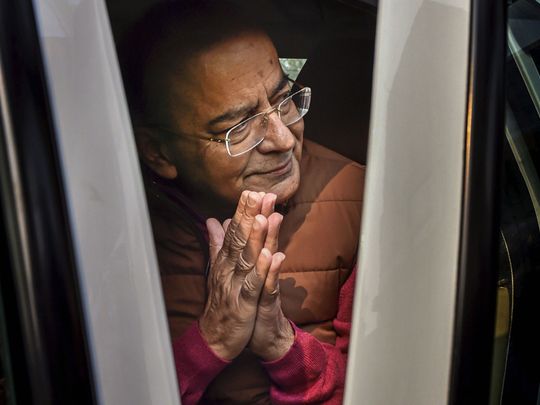
The obituaries written on the late Arun Jaitley (the former finance minister of India) cut across party and ideological lines and gives us a glimpse of the man behind the politician. Congress leader Jairam Ramesh’s tribute: “Arun Jaitley was every non-BJP person’s favourite BJP-ite. The son-in-law of a stalwart J & K Congressman, he was among the sharpest legal and political brains with a great sense of humour and repartee” tells us of the camaraderie he enjoyed with the Opposition. His English language skills and rare use of religious symbols in public discourse set him apart and leaves us wishing there were more like him in the BJP.
Let us now revisit historian Ramachandra Guha’s essay “Where are the conservative intellectuals in India?”. He says there is a paradox at the heart of Indian public life today: that while the country has a right-wing party in power, right-wing intellectuals run thinly on the ground. Where is India’s Tory Party, or the Republicans of the US. Or a William Buckley Jr or a Bill Kristol?
Spin sensation
In Jaitley’s case, despite his affability, he was a hard-core BJP man. He was one of the first senior leaders to support Modi’s candidature for the prime ministerial job and that too at the cost of a fallout with his one-time mentor L.K. Advani. He was the brains behind the legal defence of Amit Shah in the infamous false encounter case in Gujarat and one of the staunchest rebutters of the campaign against Modi in the Godhra riots case. He also oversaw the demonetisation of the currency and put a spin on it by saying ‘Confiscation of currency was not an objective … getting it into the formal economy and making the holders pay tax was the broader objective’.
Jairam Ramesh says “I once referred to him as Bedi+Pras+Chandra+Venkat for his extraordinary spinning abilities....” the four being India’s famous cricket spin quartet in the 1960s and 70s.
But we stray. Our main concern is with Guha’s lament. He says “India is an exception in the sense that while BJP is the principal pole of Indian politics, it can command the support of very few published intellectuals”. He also makes a distinction between ideologues and intellectuals and the chasm between scholarship and peddlers of half- truths who promote imagined history.
He draws a clear divide between two types of right wingers: Dr. Subramanian Swamy (one-time Harvard professor and now a provocateur (as per Guha) and Arun Shourie (Ramon Magsaysay Award in 1982) whom Guha considers a serious intellectual. He also opines that the liberal and socialist traditions have been dominant for so long in our public life that it has worked against conservative scholars. He then discusses how liberals and socialists dwell more on the future and less on the past unlike the conservatives for whom the past is all that matters. He says “the starting point of conservatism is the sentiment that good things are easily destroyed but not easily created”.
Creed of righteousness
While this may be defining feature of conservatism, in India the conservative tradition dominated by the RSS, is bound up with religious affiliation and infected with triumphalism and an embedded ‘othering’.
It is exclusionary and rooted in ‘Ancient India’. Modern India for them is an oxymoron: India is timeless and everlasting and modern India but a pale shadow of its glorious past: wherein in an imagined rule, a creed of righteousness prevailed; the reign of ‘Ram Rajya’ notwithstanding the fault lines of caste and atavistic prejudices.
What Guha says next is telling. He says “if Indian conservatives are willing to look beyond the RSS for a historical model, they need look no further than C. Rajagopalachari (C.R.), Gandhi’s ‘Southern Commander’. He was a devout Hindu, albeit one who could see beyond the pieties and prejudices of his own caste and faith”.
Indeed ‘C.R.’ was the ‘fountainhead’ for spawning the conservative tradition in India.
The magazine Swarajya founded by him declined after his death and ceased publication in 1980. It was relaunched in 2014 and describes itself as ‘a big tent for liberal right-of-centre discourse that … engages and caters to the new India’.
Whether Swarajya will survive its rebirth is far from certain but if conservatism as a political and social philosophy needs a second act, it has to break free of the bigotry of the RSS. C.R. founded the Swatantra party — an Indian classical liberal political party that existed from 1959 to 1974-precisely for this reason and his fellow followers, Piloo Mody, Minoo Masani and others were ardent right wingers moulded by liberal values. Alas, the party and its magazine lost its way. “A Party in India dissolves itself” was how the venerable New York Times described its demise. That revival in the current circumstances seems remote.
— Ravi Menon is a Dubai-based writer and thinker, working on a series of essays on India and on a public service initiative called India Talks.








